A Sega Saturn Success Story
Inspired by the fantastic ďChange the NarrativeĒ video and the push to shine a light on the positive aspects of our favourite console, I thought Iíd reflect on my personal journey with the Sega Saturn.
My first taste of Sega came in the 1980s, with the earliest memory of jumping into that awe-inspiring After Burner arcade machine, in all its gyroscopic glory. In an era where arcades were on another planet compared to home technology, Iíd never see anything like it.
Sega entered my home via a Commodore 64 port of Outrun, but it was the arrival of my little brotherís Sega Master System along with Sonic the Hedgehog in 1991 that truly captivated me, and from then on, I was besotted with Sega.
A Mega Drive that I shared with my brother and sister arrived in 1992 enhanced my love for Sega all the more and Sega had no equal in our home.
Naturally I wanted Segaís next hardware, and at the time, that was the 32X. But as I saved my paper round money, I watched that add-on launch and then quickly disappear.
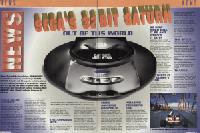
And so, my attention turned to the Sega Saturn. This seemingly exotic premium console had been spoken about in magazines for years now, in rumours of a so-called super console that Tom Kalinske had suggested would be too expensive for normal consumers.
But now this console was out there, and its price was dropping, and rather than a choice between it and the budget 32X next-gen path, the fork in the road was Saturn and PlayStation, and of course, I chose Saturn.
And it in turn rewarded me with gaming experiences that I would never forget.
I first played a Saturn on a demo booth in Argos, a UK retail store. The game I was playing at the time, Sega Rally, didnít click with me right away, but I loved how it looked, how it moved, and I loved the familiarity of the Saturn controller.
Iíd played a PlayStation for the first time earlier that same day, and I contrasted Sega Rally with Destruction Derby, and how I felt that the PlayStation pad felt like a cheap third party Super Nintendo controller. Iím not here to dunk on the PS1, itís an all-time great console, but Iím trying to give some insight into my teenage mind at the time.

It took almost a year, but in 1996 I took my savings and my birthday money and made my way to Comet, a UK electronics chain, to pick up my brand new Saturn. The staff in store at the time tried to convince my parents and I to buy a PlayStation (an interesting scenario worth digging into another time), but I knew what I wanted, and I walked out with a Sega Saturn, Virtua Fighter 2, Daytona USA and Sega Rally.
Words really canít convey what I experienced when I got home. Iíd seen Saturn games on TV shows and demo pods, Iíd played a number of the original arcade games, but nothing prepared me for what I felt when I brought my own console home.
The PAL Sega Saturn was indeed marketed as a premium device, and as such it dispensed with the RF cable, instead opting for a full-blown RGB SCART adapter. My little old bedroom TV had no such connector, so I had to hook my Saturn up to our 32 inch widescreen living room telly.
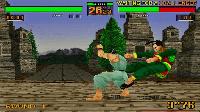 I was blown away ó the picture, the colours, the stereo sound, the movement as Virtua Fighters combatants exchanged blows at a blistering 60 frames per second with a clarity unlike any Iíd seen before (since Virtua Fighter 2 was, at the time, the highest resolution game available on any system).
This would remain the biggest generational jump I had ever seen. I went from the 2D worlds of Sonic and Comix Zone to the 3D arenas of Virtua Fighter 2, the 40-car white-knuckle racing of Daytona USA and the mud-ridden tracks of Sega Rally.
It was Rally that surprised me the most, a game I had written off when I played it on the demo pod, but once the handling clicked (which didnít take long when it was in my home) it would turn into an obsession that would remain near 30 years later.
With what little funds I had remaining from this bundle, I bought Nights Into Dreams. A no-brainer as someone who had loved Sonic Teamís Mega Drive output. In reality, I knew the game reviewed well and that you flew, but had no idea how gameplay translated to the special controller that came with it.
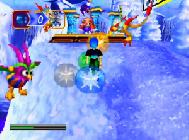
That led to a voyage of discovery within the game itself, how to play it, how to improve your ranks, unlocking the story, beating bosses faster, and so this became yet another obsession in my early Sega Saturn days and was quickly became one of my favourite games of all time.
Christmas followed, in which I received Virtua Cop 2 complete with the light gun, while my brother asked for Sega Worldwide Soccer 97, two further games that felt light years beyond anything else. Virtua Cop 2 was impossibly close to the arcade original despite the hardware differences and Sega Worldwide soccer 97 was the best football game on the market at the time.
Iím conscious at this point that each game is turning into a mini-review, and I need to stop, because we have so many Saturn games to get throughÖ
But allow me one more.
My Sega Saturn came with Sega Flash Volume 1. In my excitement talking about these wonderful games I almost overlooked this exquisitely presented demo disc. Sega Rally and Virtua Fighter 2 featured, which I already had, but Baku Baku and Golden Axe Duel were lovely looking games that felt comfortably old school.
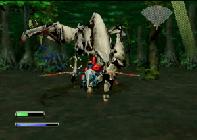
But it was Panzer Dragoon Zwei that caught my eye, and based on the stunning third level demo it immediately became a must have for me! I saved that paper round money, and it became my next purchase. Once again, there was nothing quite like it ó the music, the visuals, the gameplay. With its movie-like production values Zweiís story hit me in a way that no game had before.
I was 7 for 7 on Saturn games, all of them had blown me away to varying degrees and over half would rank among my favourite games of all time. As much as I loved them, my Mega Drive and Master System didnít deliver in the way the Saturn did. These first Saturn games had given me experiences unlike anything that came before in the home, bringing stunning arcade gameplay in a way Iíd never seen.
And things would only ramp up.
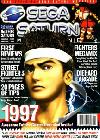
It was early 1997 when I discovered Sega Saturn Magazine and the wonderful Sega-fuelled exuberance demonstrated in that magazine, headed up by Digital Foundry head honcho Richard Leadbetter, had me hooked and feverishly looking for my next games. The tantalising samples provided by their demo discs (and to a lesser extend Saturn Power) meant I had a seemingly unending list of titles I needed to get my hands on.
Dragon Force, Athlete Kings, Virtual On and the Zelda-like adventure Shining Wisdom were early highlights amongst more solid software such as Firestorm Thunderhawk 2, Victory Boxing and an excellent port of Loaded. As far as third parties were concerned, Capcom were the MVP with the masterpiece that is Street Fighter Alpha 2.
When Final Fantasy VII hogged headlines in the gaming press, I found Shining the Holy Ark, a first-person RPG that absorbed me for months and became one of my most treasured experiences in the genre on any system.
Outstanding ports of Duke Nukem 3D and Resident Evil also joined the fray and this was rounded out by the sensational Fighters Megamix, which also launched in 1997, the incredible mashup of Virtua Fighter 2 and Fighting Vipers that felt like the ultimate fighting game!
It was late í97 when a friend of mine was asking if I was getting an N64, to which I said I was perfectly happy with my Saturn. He then asked if Iíd played a game called Guardian Heroes. I recalled the name, the game sat at number 96 of the Saturn Power top 100, but my mate said it was one of the best games heíd played.
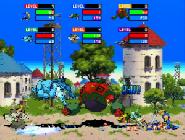
I picked up a copy, second-hand, and found not only one of the greatest scrolling beat-em-ups of all time, but an astounding multiplayer classic. When a bunch my school friends met up to play GoldenEye on N64, the Saturn and Guardian Heroes stole the show, resulting in a mammoth six-player multiplayer session, sidelining the Nintendo 64 and creating a handful of new Saturn fans.
1997 closed out with a big title for me. Sonic finally had his own Saturn game with Sonic R. While Iíd have preferred a 3D platformer like the Sonicís World section in Sonic Jam, Sonic R was a brilliantly unique and polished title with great visuals and soundtrack. It is quite unlike anything else, which was part of what made it such a compelling game.
But that was just my first year as a Saturn owner, so much more was yet to come.
As 1998 rolled around weíd heard more and more about the Saturnís successor. Sega Saturn Magazine feature more and more import titles, but there were still some incredible games coming our way.
Winter Heat proved as popular with my friends as Guardian Heroes, perhaps even more so as we played that long into the 2000s.
In the meantime, The House of the Dead delivered a flawed but faithful port of the light gun shooter, Burner Rangers was another outstandingly unique title from Sonic Team and Deep Fear, which I borrowed from a friend, was an excellent Resident Evil clone with a twist.
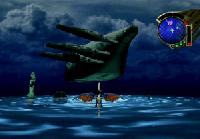
Shining Force 3 and Panzer Dragoon Saga were the last highlights of the PAL release schedule. I couldnít afford both at once, but my friend and I bought one each, with plans to play them both. A plan that experienced its own share of drama, but thatís a story for another time.
But in the midst of all of that, we had done the most sensible thing a Saturn fan could do at the time. Urged on by Sega Saturn Magazine, we got our PAL consoles region modded to play titles from any part of the world at 60hz.
And with that a new chapter of the Sega Saturn opened before our eyes. The first stop was X-Men vs Street Fighter, and its sequel Marvel Super Heroes vs Street Fighter, combined with Capcomís miraculous 4MB RAM cart to give us near arcade perfect ports of games no other platform could manage.
They may have been the tipping points, but the King of Fighters games, Dracula X, Radiant Silvergun and so many more kept us playing well into 1999.
It would be March 1999 when we would finally get our Dreamcasts, but for me that didnít mean the end of Saturn.
I kept buying titles for the console that had never stopped entertaining, that had given me so many memorable experiences in just a short space of time.
It seems astonishing now, looking back, that the console made such an impression on me in just under two and a half years.
Yet even with its successor in my home, I never stopped playing it.
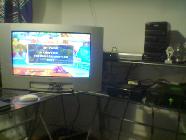 It remained a fixture in my setup, with photos from 2004 to 2008 showing that it never once left the centre of my own gaming arena.
And through all that time I was still discovering games and picking them up, despite going through the newer PlayStation, Xbox and Nintendo consoles, Iíd still go back to the Saturn.
And that rings true today more than 25 years on from the last Sega Saturn game in the UK I still have the console ó or consoles as I now have more than one ó hooked up. Iím still discovering games from that huge library of more than 1,000 titles worldwide and I still play my favourites regularly.
Commercial success is an important measure of a console when considering its longevity, popularity and influence.
But is not the only measure.
What should be abundantly clear from all of this is that the Saturn had a profound impact on me during its time as a supported platform based on nothing else but itís credentials as a videogames console.
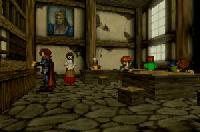
It has a game for every taste and genre. The first-party titles were numerous and consistently of incredible quality. Third-party support was excellent when it came whether from 2D powerhouses like Capcom or the geniuses at Lobotomy.
Even where a title suffered visually next to a PlayStation game, there was usually a thread to hang on to, like the analogue controls in Wipeout 2097 or the superior light-gun performance in Die Hard Trilogy.
It was a console that won over any friend I had during my teenage years willing to try it out.
And that is still true some 25 years later, where almost every day, someone is discovering Saturn.
Itís a console kept alive with frequent homebrew projects such as new games, mods and translations.
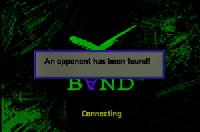
Itís a console you can play online thanks to the enthusiastic community updating both the hardware and software to make it possible.
Itís a console with quite possible the finest controllers ever produced, particularly the original Japanese pad, which was perfect for all of those fighting games and shmups.
The Saturn that did it all, it was both of its time and beyond its time, it had firm footing in both the past and future during the í90s, and while that may have cost it the present at its time, its appeal transcends its era in almost every conceivable way.
My Sega Saturn Success Story is about a console that would remain my favourite gaming device of all time, despite the myriad systems that came after. Itís about finding friends, with whom we continue to explore its well of untapped potential, share experiences and relive the timeless classic games it gave us.
But above all the Sega Saturn was a success for one key reason above all else, it was an utterly fantastic games console.
Dan the Mega Driver
|
|
The MegaDriver |
| |
Husband, Father of 3, Analyst, Gamer and Half of The SegaGuys podcast.
Dan is a HUGE SEGA fan, and the Saturn is his favorite game console of all time! | |
|
| |
| |
|